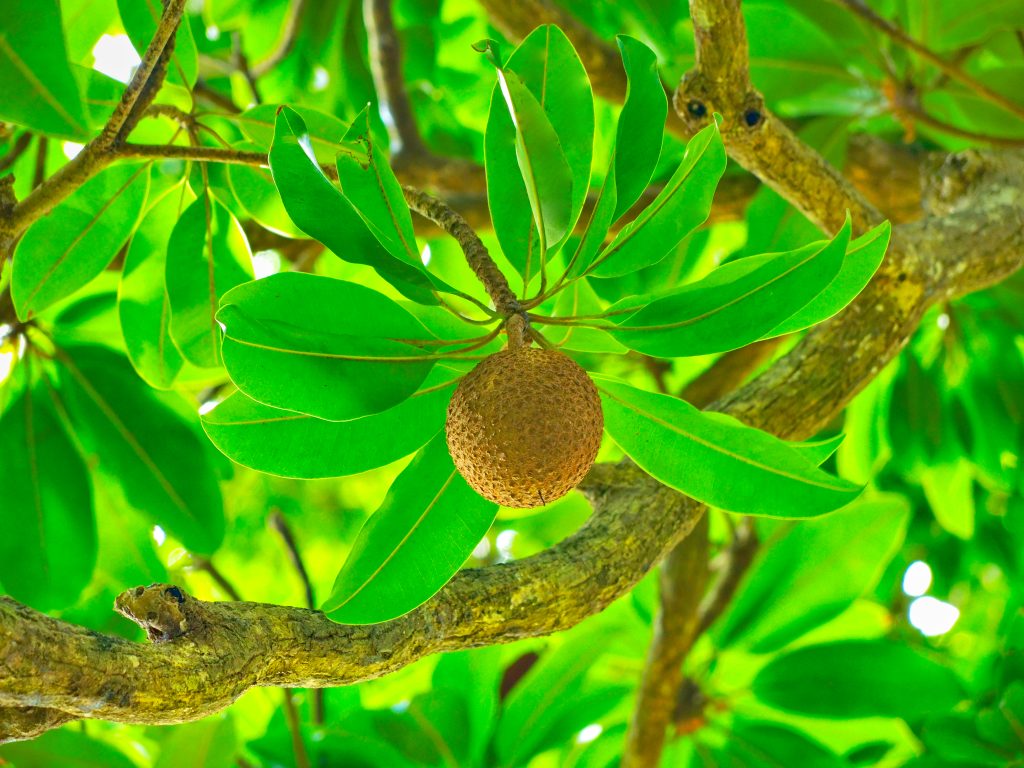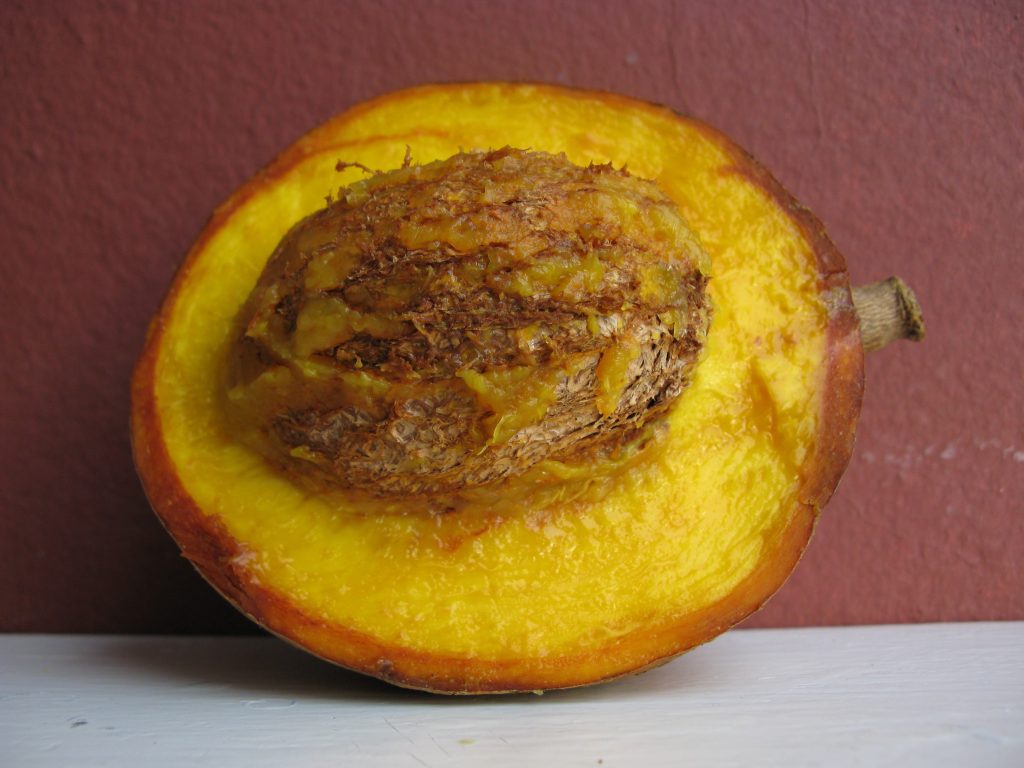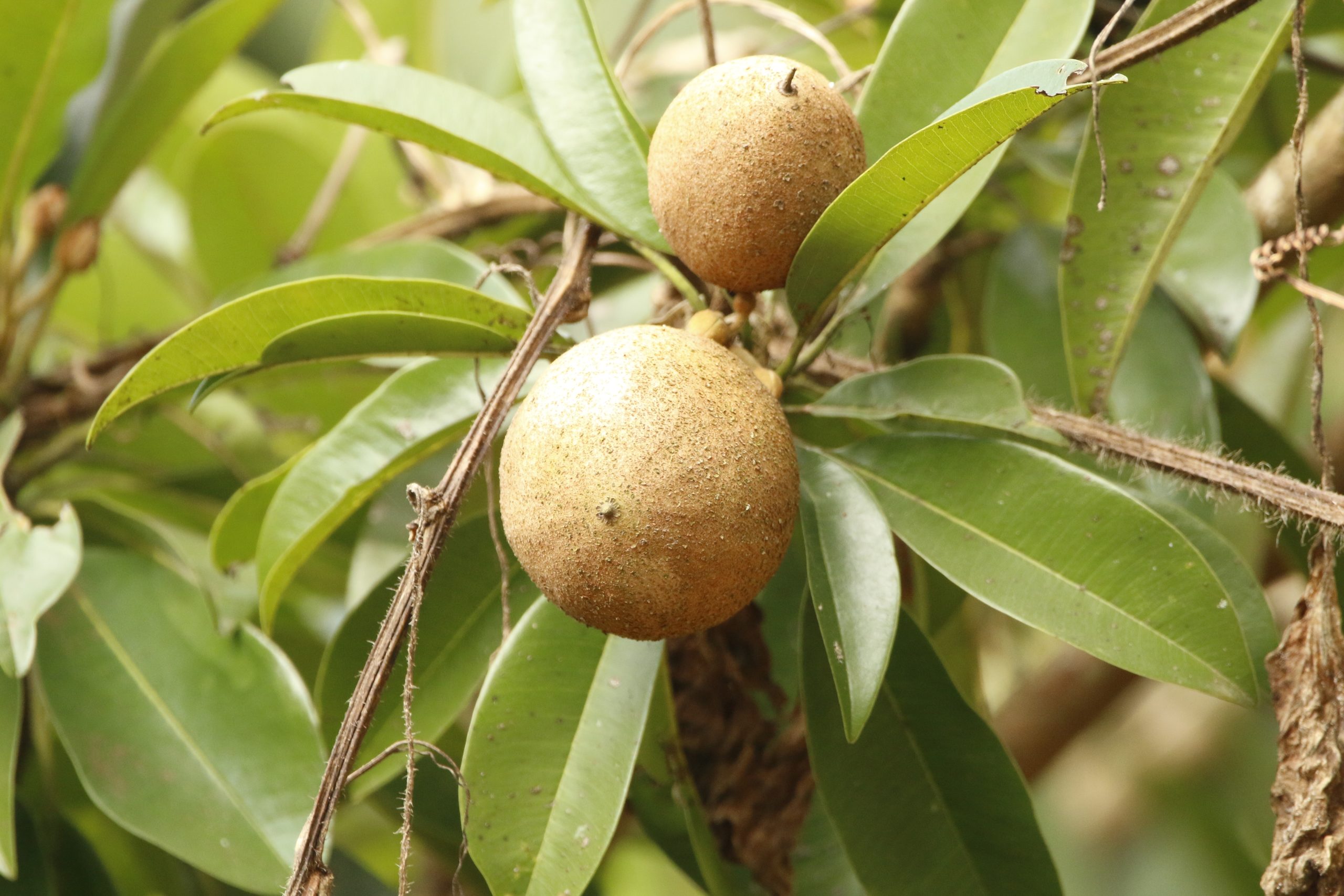Mamey apples are a unique Caribbean fruit enjoyed for their sweet, creamy flesh and distinctive flavor. Though they are called "apples," they are a type of berry growing on large, tropical trees.
Table of Contents
What is a Mamey Apple?
A mamey apple (Mammea Americana) is a tropical fruit related to the mangosteen, and it originates from Central America, Mexico, and parts of the Caribbean. The fruit is botanically classified as Pouteria sapota.
The mamey apple is an oblong-shaped fruit that can grow up to 10 inches (25 cm) long and 4-5 inches (10-13 cm) in diameter. The fruit’s skin is rough and brown, resembling the texture of a potato. It is considered to be a berry but not a drupe.
The flesh of the fruit is a vibrant orange-pink color and has a creamy, custard-like texture, similar to an avocado or a custard apple. The mamey apple’s flavor is sweet, creamy, and has a distinct musky undertone.
Its taste has also been described as a combination of sweet potato, pumpkin, and apricot.
Other common names for the mamey apple include mamey sapote, tropical apricot, Santo Domingo apricot, mammy-apple, and South American apricot. In Latin America, the Mamey apple is called Mamey Amarillo (which means yellow mamey in Spanish); in French, it is called Abricot sauvage or apricot d’Amerique; and in Brazil, it is referred to as Abricó.
The fruit tree is an evergreen tree of the family Calophyllaceae, with dark-green shiny leaves and resembles the southern magnolia (Magnolia grandiflora). It grows exclusively in tropical or subtropical climates, near limestones, ancient coral bedrocks, and coral cays in Puerto Rico, Jamaica, Bahamas, Barbados, the Virgin Islands, Trinidad & Tobago, and Florida.
The fruit is usually harvested in the late summer and early fall and is commonly consumed fresh. Mamey apples have various culinary applications, such as smoothies, desserts, and ice creams.
Other than medicinal use, infusions of the mamey apple seeds and rind can also be used as an insecticide for fleas, ticks, and jiggers.
The History of Mamey Apples
The Mamey apple is a fruit that holds a special place in the hearts and traditions of people in Haiti and the Dominican Republic. It is so essential that it is protected throughout much of the Caribbean.
The fruit seeds have been used for centuries as a natural remedy for various ailments, as an antibiotic and insecticide. In the French West Indies, the delicate flowers of the Mamey apple tree are used to make a sweet liqueur known as Eau de Creole, known for its tonic and digestive properties.
The fruit was first recorded in Panama in 1514 and later written about by Gonzalo Fernandez de Oviedo y Valdes in 1529 in his “Review of Fruits of the New World.” In the early 19th century, it was also introduced in Western Africa and Hawaii. A tree was brought to the Big Island by Captain Alexander Adams in 1816, and it still grows there to this day.
Despite its long history and cultural significance, the Mamey apple remains relatively unknown outside its native region. However, it has found a home in Southern Florida, where locals grow and appreciate it.

What Does a Mamey Apple Taste Like?
Raw mamey apple has a sweet and creamy flavor with hints of caramel and almond. The texture resembles a ripe avocado, and the flesh is often used to make smoothies, shakes, and ice cream.
When cooked, you can use mamey apples in many dishes, including pies, jams, and puddings. Cooking the fruit can intensify its flavor and sweetness, making the flesh softer and easier to puree. However, the fruit is often enjoyed raw because of its delicious taste and creamy texture.
How to Tell When a Mamey Apple is Ripe
To determine if a mamey apple is ripe, consider the following:
| Texture | A ripe mamey apple should be slightly soft to the touch, with a texture similar to an avocado’s. |
| Firmness | When gently squeezed, it should give slightly but not feel too mushy. If it’s too soft, it may be unripe. |
| Scent | A ripe mamey apple will emit a sweet aroma similar to a ripening peach. |
| Smoothness/Roughness | The skin, like sandpaper, should feel smooth and slightly rough. |
| Color | The skin should be deep reddish-brown, with yellow or orange flesh. |
Note: When shopping for mamey apples, look for fruits that are free of bruises, cracks, or soft spots. Avoid mamey apples that are too hard, as they may not have ripened fully and will not be as flavorful.
Can I Eat Raw Mamey Apples?
Yes, you can consume raw mamey apples. They will have a unique, sweet flavor and creamy texture. Here are some possible applications for raw mamey apples:
- Sliced and eaten as a snack: You can cut the mamey apple into slices and eat them on their own.
- In a salad: Mamey apple slices can be added to a fruit or green salad to add sweetness and texture.
- Smoothies: Mamey apples can be blended into smoothies with other fruits or milk and yogurt to create a thick and creamy texture.
- Mamey apple juice: You can also juice mamey apples and drink the juice as a refreshing beverage.
Note: The seeds and skin of mamey apples are not edible and should be removed before consuming the flesh.
Cooking with Mamey Apples
First, to prepare mamey apples, wash them thoroughly to remove dirt or debris. Cut them in half lengthwise and remove the large seed in the center. You can then slice or dice the fruit as desired for use in various recipes.
You might find mamey apples served in a refreshing fruit salad or paired with cream for a decadent dessert in Jamaica. If you’re in the Bahamas, you’ll notice it in jam-like spreads that can be enjoyed on toast or as a sweet topping.
And if you’re in the French West Indies, you can indulge in an aromatic liqueur (with potent tonic or digestive properties) called eau créole, made from the flowers of the mammee tree.

Here are some recipes that feature this lovely fruit:
Traditional Mamey Smoothie: Made with fresh mamey, milk, vanilla, sugar, and cinnamon, this smoothie is perfect for those days when you need a little pick-me-up.
Mamey Cake: this cake is not your average vanilla sponge. Its moist texture and rich mamey flavor make it a dessert perfect for any occasion, from birthdays to weddings.
Salmon Belly with Mamey Sapote: This dish is a flavor explosion in your mouth. The tender salmon belly perfectly balances the spicy guajillo chili and the sweet, velvety mamey sapote.
Caribbean Apricot (Mammee Apple) Jam: Made with fresh apricots and mamey sapote, this jam is a tropical delight. It’s sweet, tangy, and has just the right amount of zing. Spread it on toast, drizzle it over ice cream, or use it as a glaze for your favorite meats.
How to Store Mamey Apples
Mamey apples can be stored at room temperature for a few days until they are ripe.
Once ripe, they should be eaten or stored in the refrigerator. You can store mamey apples in the fridge for up to two weeks – but place them in a plastic bag or wrap them in plastic to prevent moisture loss.
To freeze, cut the fruit into chunks, remove the seeds, and place them in an airtight container or freezer bag. They can last six months when frozen.
Nutritional Benefits of Mamey Apples
Mamey fruit has many health benefits due to its high nutrient content. It contains calcium, phosphorus, iron, vitamins C and A, potassium, and magnesium.
It contains a significant amount of fiber, which can improve colon health and digestion and reduce the risk of hemorrhoids and colorectal cancer. Additionally, mamey fruit is rich in carotenoids, such as alpha-carotene, beta-carotene, and lycopene, which act as antioxidants to protect bodily tissues from damage.
It also contains lutein and zeaxanthin, which can help maintain eye health. Mamey fruit is an excellent source of iron, which can help prevent iron deficiency, and contains vitamin C, which aids in absorbing non-heme iron.
Where to Purchase Mamey Apples
If you want to buy Mamey apples, check local specialty stores or farmers’ markets specializing in exotic or tropical fruits. You may also find them at Latin American markets or grocery stores catering to Hispanic communities.
Mamey apples are primarily grown in the United States in Florida, Hawaii, and California. They are typically in season from May through September, with the peak season from June to August. However, availability may vary depending on the region and the specific growing conditions.
If you cannot find fresh mamey apples, you can purchase them as frozen pulp or puree, which can be used in various recipes. Some online retailers also offer fresh or frozen mamey apples for delivery.

